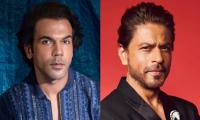Dr S. Tanveer Ul Huda, consultant diabetologist & endocrinologist at Dr Ziauddin University Hospital, has highlighted the unique relation between diabetes and stroke, saying that diabetes affects the body’s ability to produce insulin or use it properly.
He was speaking as guest speaker at a public health awareness seminar titled ‘The Power of Saving Precious Time’, which was recently organised by Dr Essa Laboratory & Diagnostic Centre in connection with World Stroke Day.
Dr Huda said that since insulin plays an important role in pulling glucose into cells from the bloodstream, people with diabetes often have too much sugar in their blood, over time, excessive blood glucose can result in increased fatty deposits or clots in blood vessels. These clots can narrow or block blood vessels in the brain or neck, cutting off the blood supply, stopping oxygen from getting to the brain and causing a stroke.
He warned that people with diabetes are twice as likely to have a stroke as people without diabetes. They’re also more likely to have a stroke at an earlier age, and the outcome may be worse. People with diabetes also have a higher risk of small bleeds in the brain which could lead to a hemorrhagic stroke.
According to Dr Huda, 80 per cent of all strokes are preventable. This starts with managing key risk factors and engaging in the three non-dietary interventions—smoking cessation, daily exercise and weight loss—was estimated to reduce the risk of total stroke by 25 per cent and ischemic stroke by 36 per cent. Sustained dietary modifications are estimated to reduce the risk of total stroke by 23 per cent and the most important is to attend all appointments, and follow your treatment plan for effective diabetes management.
“Almost 70 percent of patients fail to identify transient ischemic attacks and even mild strokes. Even when symptoms are identifiable, almost one in three people do not seek immediate help. Reducing the amount of time between initial symptoms and receiving treatment is very important because it can save many sufferers from severe disability,” said consultant physician Dr Munir Hussain Faswala (MD, DABIM).
Dr Munir Hussain talked about the greater risk of stroke faced by women in comparison with men. He said that of every 10 deaths from stroke, six occur in women and this is largely attributed to the longer life expectancy of women as most of these occur later in life. Women also tend to have worse outcomes than men as indicated by more severe disability. “Oral contraceptives increase the risk of ischemic strokes, caused by a blood clot that blocks or plugs a blood vessel in the brain. The risk also increases for a woman during pregnancy as the increased blood pressure puts stress on the heart. Migraine, which has 3- to 4-fold prevalence in younger women compared to men, can cause chances of stroke three times up in women while rheumatic heart disease and atrial fibrillation in younger females is emerging as major cause of strokes,” Dr Munir Hussain elaborated.
Dr Saba Zaidi, consultant neurologist and assistant professor at Liaquat National Hospital, said that in Pakistan, an estimated 400 people die of stroke every day while another 1,000 suffer from paralysis. Seventeen million people suffer a stroke each year and six million people die from it globally. Over 116 million years of healthy life are lost each year due to stroke- related deaths and disability.
In Pakistan, people on average suffer strokes 10 years earlier than the average age for strokes – 60 years – in developed countries. This deadly disease is rising rapidly in Pakistan and every year 350,000 cases of strokes are reported in the country.
“A stroke is a serious medical emergency causing premature death and disability. It occurs when blood flow to an area of brain is cut off; brain cells are deprived of oxygen and begin to die. That could be due to a clot, known as an ischemic stroke. Or it can happen with a burst blood vessel, as with a hemorrhagic stroke. Once a stroke begins, you lose almost two million brain cells every minute,” Dr Saba said.
While informing the audience about causes, symptoms and management of stroke, she said the incidence of stroke increases significantly with age, and other causes are hypertension (high blood pressure), diabetes, high cholesterol, poor diet, a high waist-to-hip ratio, psychosocial factors, high alcohol intake, smoking or chewing tobacco. Heart diseases are the leading causes of stroke.
“High blood pressure is the single largest risk factor for strokes. Patients with hypertension have an eight times greater chance of having a stroke and is behind nearly 50 per cent of all strokes. It can also increase the risk of intracerebral haemorrhage, which often leads to particularly severe disabilities. The diseases often go undiagnosed as people generally don’t get their blood pressure and sugar levels tested even once in a year,” explained Dr Saba.
She said speech difficulties, ataxia (difficulty in walking), facial weakness, vertigo (room spinning around you), double vision and numbness on the face, arm, leg and weakness are a few symptoms of this deadly neurological disorder. Survivors of stroke face significant impairment in speech, movement, cognition along with debilitating psychological, social and financial problems.
The treatment for stroke may also depend on its type. An ischemic stroke in many cases can be reversed through medicines but only if it is detected within three hours of its occurrence. Treating a hemorrhagic stroke involves finding the cause of bleeding in the brain and controlling it.
Advanced scans, such as CT angiography, perfusion imaging and MRI are also done to evaluate the site of blockage and quantify the extent of the brain that can be salvaged. “The cure for a stroke depends on the amount of area damaged. If the damage is fatal, then it may take months to heal and if the damage is normal, the patient may recover within a week or two,” Dr Saba explained.
After a stroke, successful recovery will often involve specific rehabilitative activities such as speech therapy, physical therapy to help a person re-learn movements and coordination along with occupational therapy to help people improve their ability to carry out routine daily activities.
If you suspect that you or someone around you has suffered a stroke, you have to approach the nearest centers which are equipped with acute stroke management with tertiary care set-ups as soon as possible,” she advised.
Sindh IGP Ghulam Nabi Memon presides over a high-level meeting at CPO building in Karachi on May 14, 2024. —...
This picture shows Pakistani Airports' Security Force personnel standing guard at Jinnah International Airport in...
The girl was taken to a hospital where doctors confirmed that she had been subjected to rape.
Police personnel stand alert in Karachi on February 2, 2024. — INPA judicial magistrate on Tuesday granted one-day...
A representational image showing a person handcuffed and standing behind bars. — AFP/File Two wanted gang war...
In this image, Commissioner Karachi Syed Hasan Naqvi chairs a meeting on May 13, 2024. — Facebook/Commissioner...







